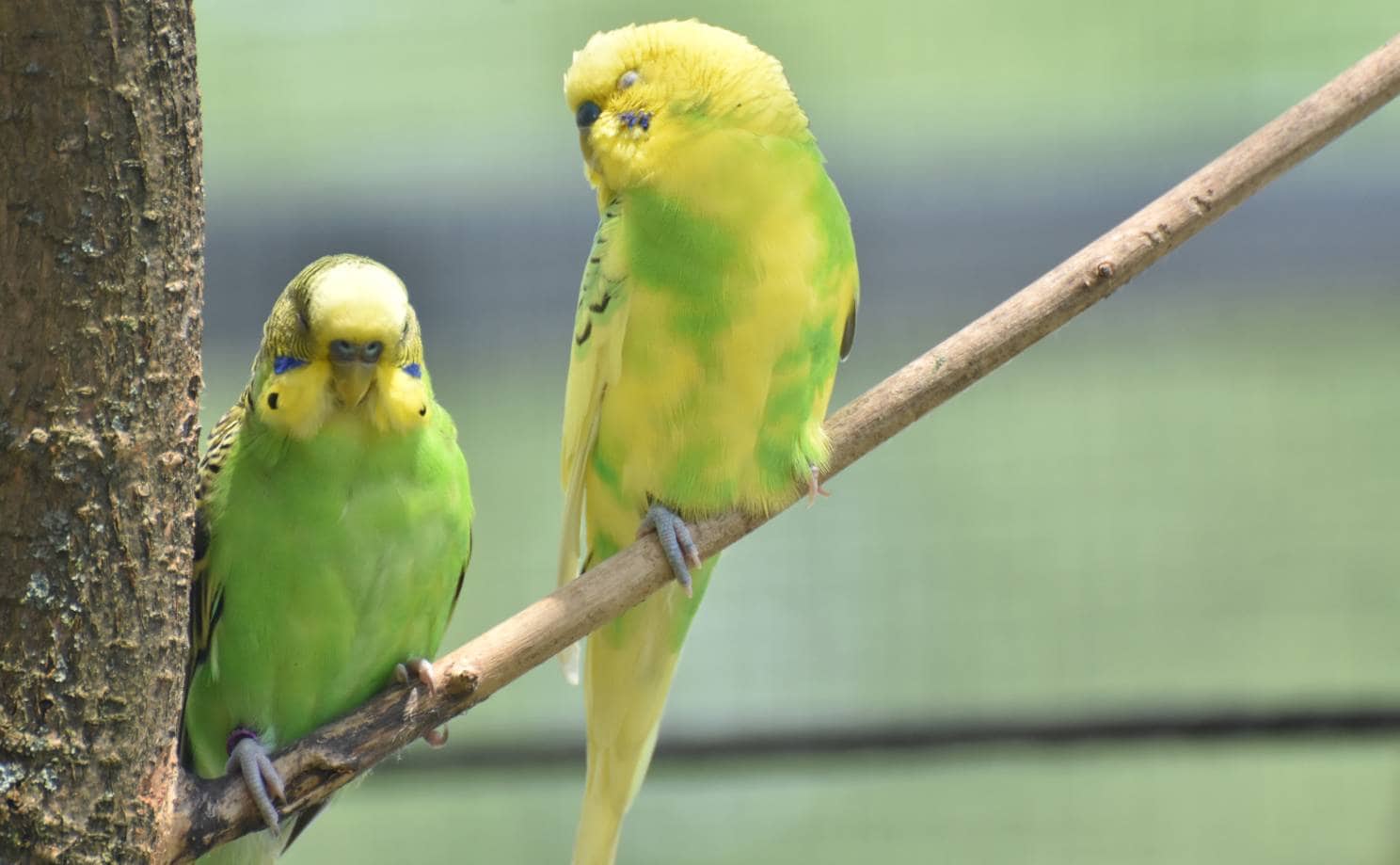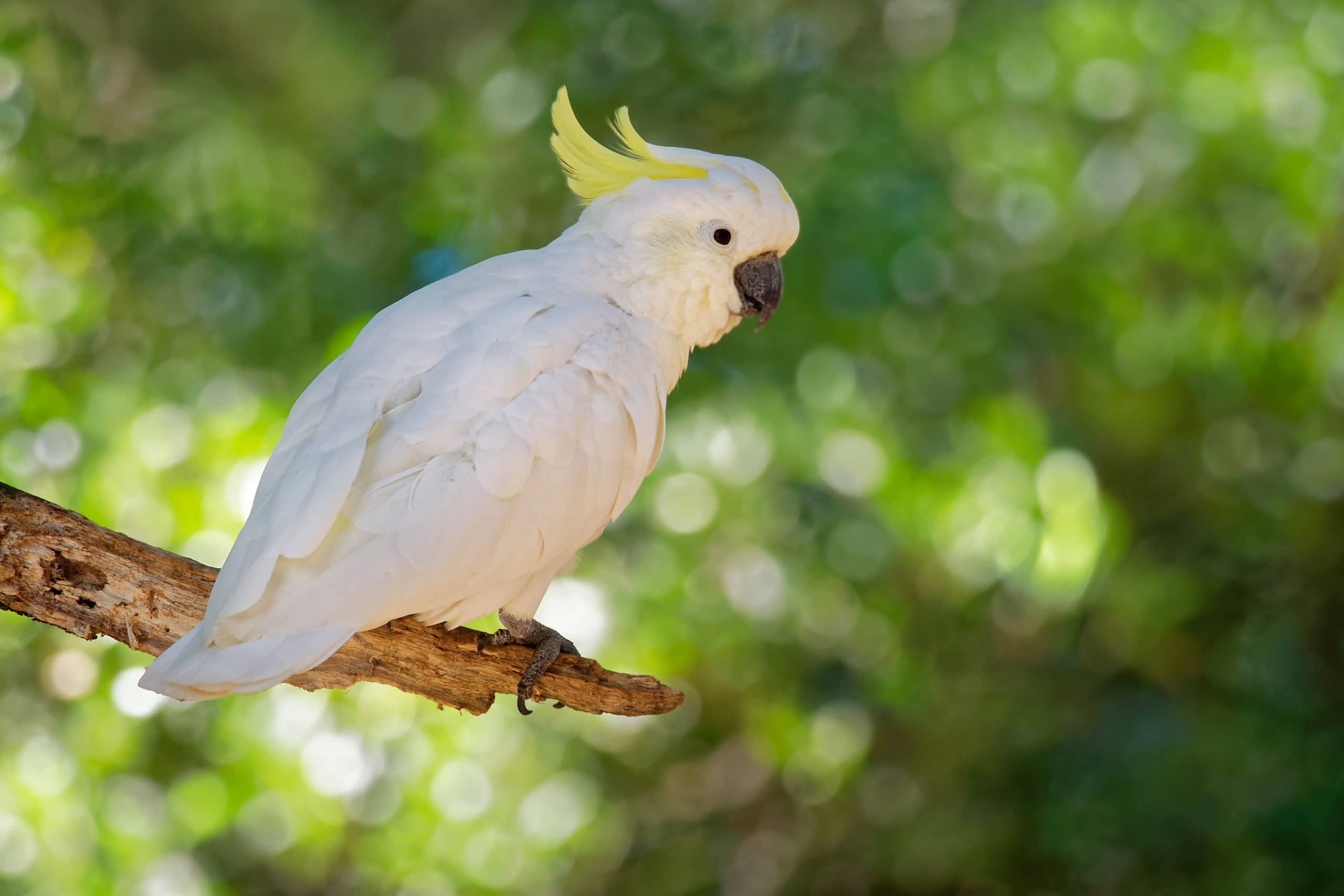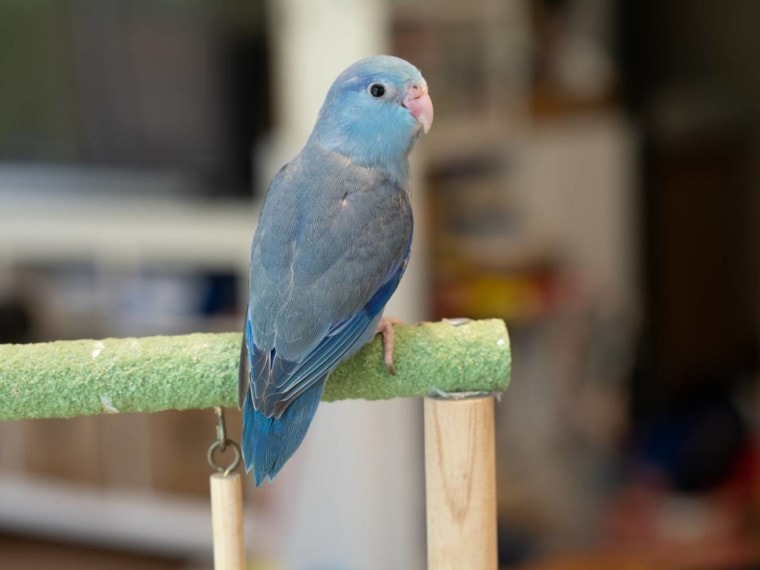
Click to Skip Ahead
Keeping parrots differs in countless ways from keeping more common household pets like cats or dogs. Birds have very different care requirements and are sensitive in many ways that other pets aren’t. In general, most pet parrots’ comfort range is between 65–80°F. New bird owners should consider the temperature requirements for their pets. Dogs and cats can lay in a sunbeam when they’re cold or lounge on cooling mats when they’re hot, but the same may not apply to parrots.
Keep reading to learn about the ideal room temperature for parrots and how to ensure your bird stays comfortable all year round.
Normal Room Temperature for Parrots
Wild parrots live in tropical and subtropical climates where the average temperature is between 70–90°F, and humidity levels are between 75–90%. In their natural habitat, parrots can regulate their temperatures by retreating to shady areas or seeking out sunny clearings. Companion parrots, however, rely on their humans to tweak their environment to just the right temperatures.
Humans typically try to keep our homes at a relatively constant temperature throughout the year, regardless of the season. Extenuating circumstances, however, may impact our ability to regulate indoor temperature. Unless your air conditioner breaks down in the middle of a heat wave or your heater conks out during a cold snap, your parrot’s environmental temperature should be pretty regulated.
Companion parrots can adapt relatively well to a wide range of temperatures. Still, once it has gotten used to the typical feel of your home, any further changes to the temperature should be gradual. This doesn’t mean your bird will not adapt to temperatures outside of what is normal in your home, but your pet will need time to get acclimated to cooler or warmer temperatures. You may have problems if your parrot runs into rapid temperature changes greater than 10 to 15 degrees in a 24-hour period.
In general, however, most companion parrots’ comfort range is between 65–80°F, but they can withstand a broader range if they have time to acclimate to it slowly.
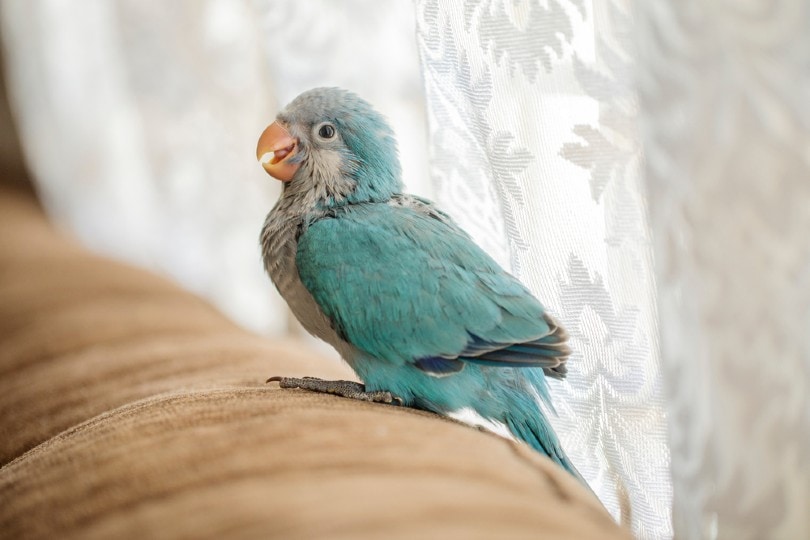
Factors That Affect Your Bird’s Temperature Levels
Several factors can determine how comfortable your bird will be with the temperature in its room.
Moving Air
The more moving air in your bird’s room, the more likely it will be to withstand a slightly warmer environment. You can provide air movement by placing the cage near an open window to allow the breeze to flow through or by placing a fan near the cage.
Moving air can help cool your bird’s respiratory tract so its core temperature won’t rise.
Bird’s Size
Thin birds have less meat on their bones to keep them warm. This may make them less apt to handle cooler temperatures than their slightly plumper counterparts.
However, overweight birds are more likely to overheat and won’t fare as well in hot temperatures as thinner birds. The chubbier your bird is, the lower the temperature will be which can cause heat stress.
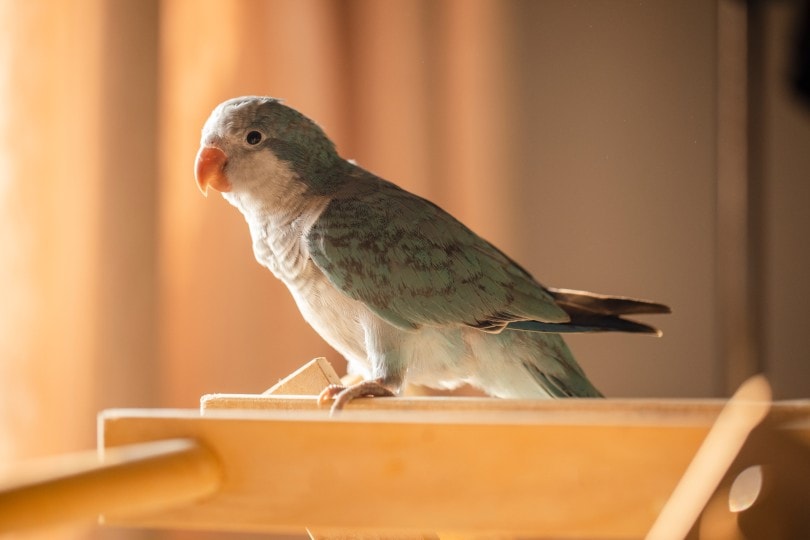
Their Typical Environment
What environmental temperature is your bird used to? It may be able to tolerate colder and hotter weather if it is given time to adjust gradually to the temperatures. Think of it this way – humans who work outside in extreme temperatures typically do not feel the heat or cold as much as those who are always in temperature-controlled environments. Birds will also adapt over time.
How to Regulate Your Parrot’s Temperature in 6 Easy Steps
1. Provide a Heat Source
Many parrots need warmth to remain healthy, especially because many species hail from the tropics. Once the weather becomes too cool, your parrot may fluff themselves up, expending all of their energy to try and keep warm.
You can use a space heater to provide heat for your bird’s room but keep it far enough away that it will not become hazardous. Do not use heaters that produce fumes, and do not let your bird free fly with a space heater as they may fly into it or chew on the cords.

2. Provide Air Flow
In the warmer months of the year, a ceiling or oscillating fan can provide a breeze that improves cooling evaporation. However, do not blow the air directly into the cage, keep the speed low, and don’t let it run all day long.
3. Consider Cage Placement
Keep your bird’s cage at least 12 to 18 inches away from your home’s exterior windows to prevent drafts.
Be mindful of how much direct sunlight your bird will get from nearby windows. If it’s warm outside, you may want to move the cage to a cooler room.
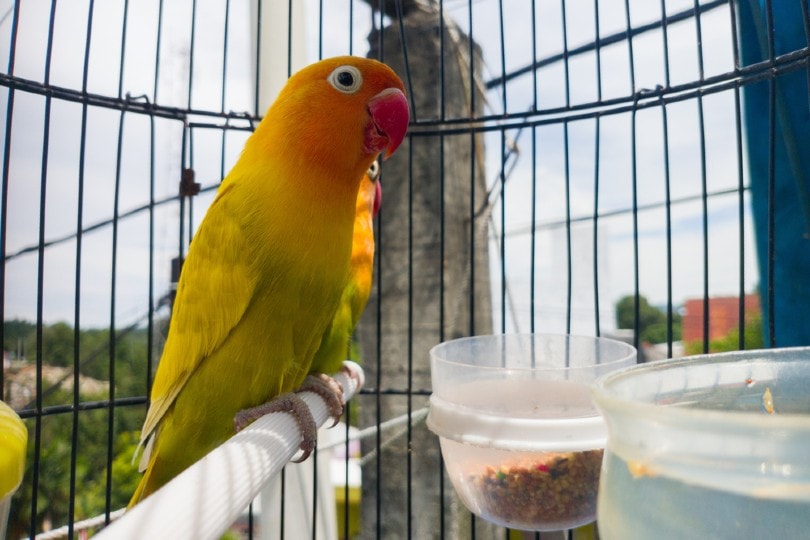
4. Offer Plenty of Water
Around 75% of a bird’s body is water. According to Chewy, an adult bird must drink enough water daily to make up 5% of its body weight. It’s very easy for exotic bids to get dehydrated thanks to their tiny bodies and fast metabolisms. Therefore, they need a lot of fresh drinking water to prevent dehydration.
5. Use a Misting Bottle
If your bird is overheating, you can cool them down by spritzing them with a misting bottle. Fill a spray bottle with cool (not cold) water and shower them with the mist. If your parrot spreads its wings, they love their misty bath so keep doing what you’re doing.
6. Cover the Cage at Night
During the year’s cold months, a cage cover may be your bird’s best friend. It can keep warmth trapped inside the cage so your pet can sleep comfortably and cozily.

Signs Your Bird Is Uncomfortable With Its Environmental Temperature
Though your bird, unfortunately, cannot tell you if it’s hot or cold, there are some signs it will display if it is feeling uncomfortable with the temperature in its environment.
Frequently Asked Questions (FAQ)
What kind of heaters are safe for birds?
The best way to keep your parrot warm during the year’s cooler months is to use a heater. However, you must ensure the heater you use is safe for birds so that it won’t threaten your pet’s health.
Central heating systems are built into most homes and will keep them warm during the winter. They are safe for birds in most cases as the heat source is nowhere near the bird and won’t be emitting harmful substances that can impact your parrot’s sensitive respiratory system.
Oil-filled radiators are another popular heat source for homes. They do not burn off or emit harmful gases and are not hot to the touch, so they’re generally considered safe.
Ceramic heaters are popular as they can save you money on your heating bills. They are excellent for large rooms as they can disperse heat effectively. They are clean burning, small, and efficient, but they can get very hot to the touch and must be out of reach of your bird at all times.
Face the heater away from your bird’s cage, and do not put their cage directly over top of a heat vent.
What things should I keep in mind as I search for a heater?
Do not buy a heater that has a Teflon coating. Since your heater will run for many hours, you must ensure no polytetrafluoroethylene (PTFE) is used in its construction. PTFE will release toxic particles and acidic gases when heated to certain temperatures that will be toxic to your bird if inhaled. Call the manufacturer to inquire if you’re not 100% certain that your heater does not contain PTFEs. This is not a step you want to skip.
Your heater should have a feature that will allow it to maintain a constant room temperature. You should be able to set a temperature, and once the room reaches that temperature, the heater will turn off automatically. A small room will quickly overheat and become dangerous to your pet if the heater does not have this function.
Another great feature to hunt for is automatic shut-off. If the heater tips over, it will shut off to prevent fires.
Will my bird be okay if exposed to rapid temperature changes?
It may or may not. Birds can be relatively tolerant of temperature changes, provided that they’re very gradual. However, rapid changes from cold to hot or vice versa can challenge your parrot’s immune system and even make it less capable of resisting infections.
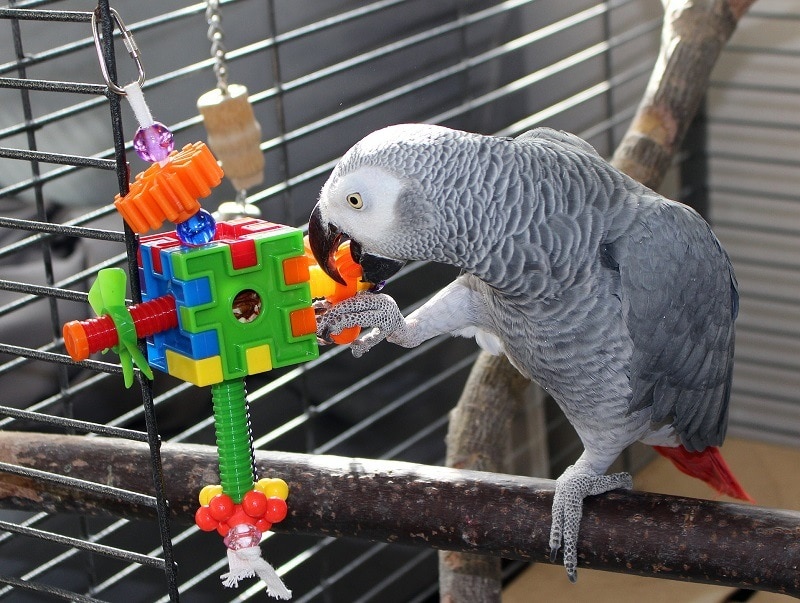
How does a parrot react if it overheats?
Your parrot’s body will react very differently when it’s hot versus cold. When it’s cool, birds and mammals have a survival mechanism that allows the body to direct blood flow to the core to protect the organs. In excessive heat, however, birds are disadvantaged as they do not have sweat glands. When humans become too hot, we sweat to cool us. Other mammals with fewer sweat glands will pant to regulate their temperatures.
Birds do pant when they’re overheating, but this is not a reaction that will regulate their temperature. When a bird pants, it means it’s in trouble. A parrot that hasn’t been allowed time to acclimate to changes in temperature will not fare well in high temperatures. If your pet begins showing symptoms of overheating, take it somewhere cooler and use room-temperature water to soak it. Do not use cold water, as it can cause serious health problems like organ damage, shock, or death.
Conclusion
Keeping tabs on your parrot’s temperature is essential to bird ownership. Watch for signs that your bird is too cold or hot, and try to keep its room at a constant temperature. Your parrot can withstand temperature changes, but they must be in small increments or done gradually to stay safe.
Featured Image Credit: JTKP, Shutterstock





